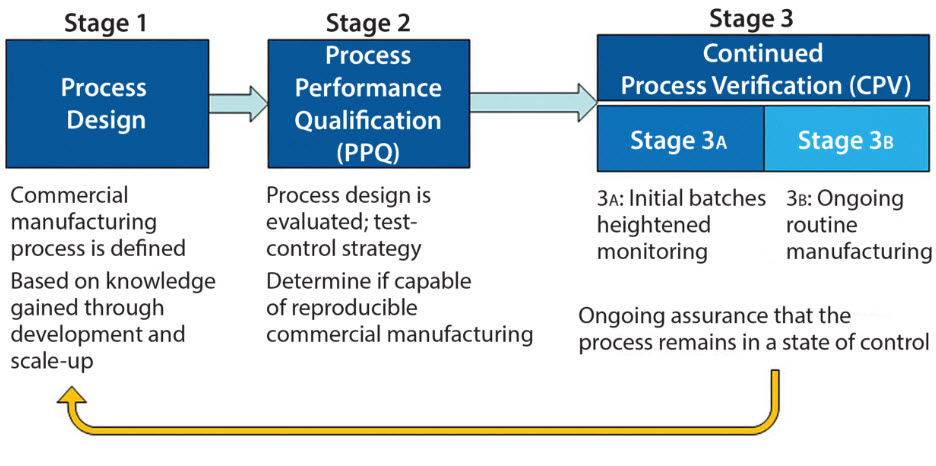As defined in the ICH Q10 guideline, a control strategy is “a planned set of controls, derived from current product and process understanding, that assures process performance and product quality” (1). Every biopharmaceutical manufacturing process has an associated control strategy.
FDA’s 2011 guidance for process validation (2) describes process validation activities in three stages (Figure 1). A primary goal of stage 1 is to establish a strategy for process control that ensures a commercial process consistently produces acceptable quality products. Biopharmaceutical development culminates in the commercial control strategy, a comprehensive package including analytical and process controls and procedures. Stage 2 process performance qualification (PPQ) is needed to establish scientific evidence that a process is reproducible and will consistently deliver high-quality products. Stage 3 of validation and continued process verification (CPV) provides an opportunity to improve process control through the lifecycle of a product. Continue reading
SEE ALSO: 4 Steps for Managing Biopharmaceutical Manufacturing Projects





